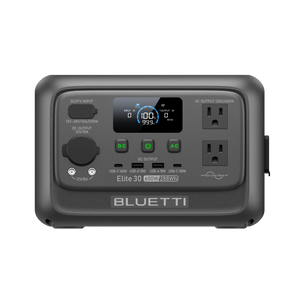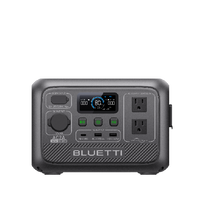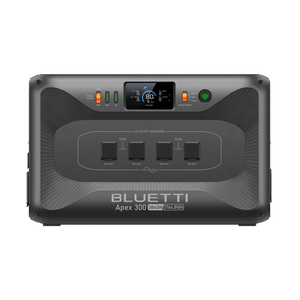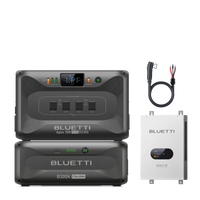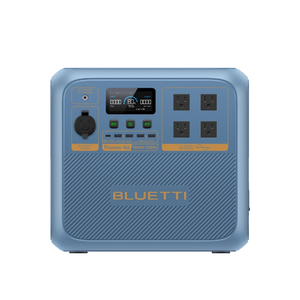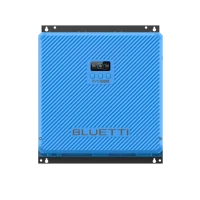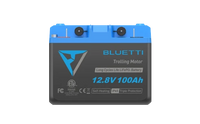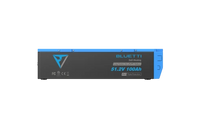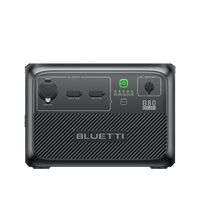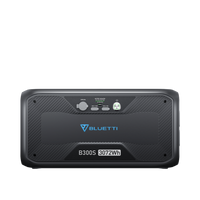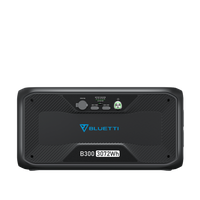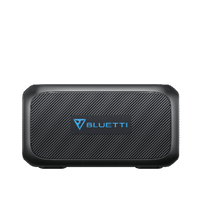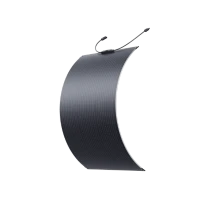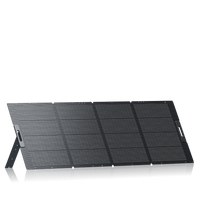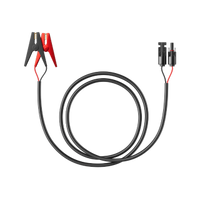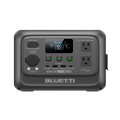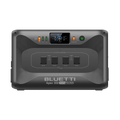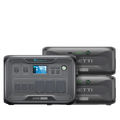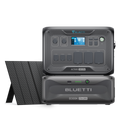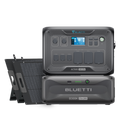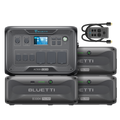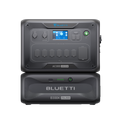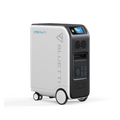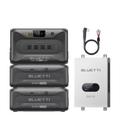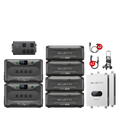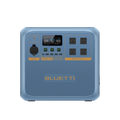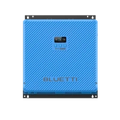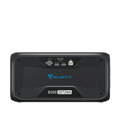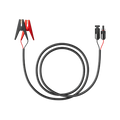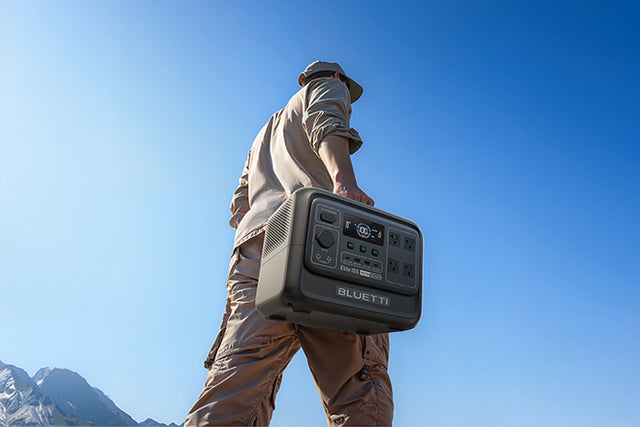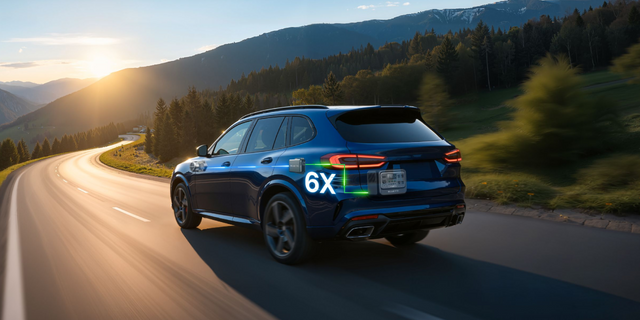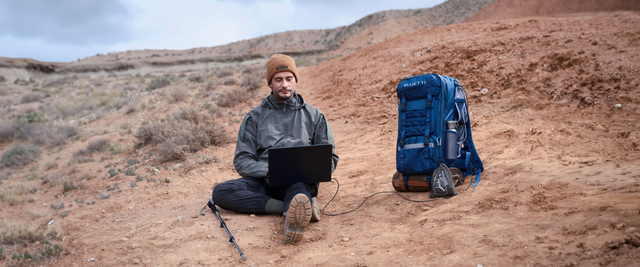Your cart is empty
Shop our productsThere are many ways to charge a marine battery, but few are as eco-friendly as using solar panels. Solar panels allow you to use solar energy, which does not pollute the environment. And since it is a renewable source of energy, you can keep your batteries charged always. So, can you charge your starter and deep cycle batteries using solar panels? Let’s find out.
Can You Use a Solar Panel to Charge a Marine Battery?

Yes, you can charge marine batteries using a solar panel. Modern boats come with two batteries: one to start and the other for trolling the boat. With a solar panel you can rest assured the two batteries will always be charged. Furthermore, there’s minimal sunlight obstruction on water bodies, meaning the solar panels will receive ample sunlight during peak sun hours.
The size and number of solar panels you’ll need will depend on the type and size of batteries on your boat.
Types of Marine Batteries
- Starter battery: As the name suggests, its primary role is to start the boat. Also referred to as the cranking battery, it starts the motor, consuming a big power dose within a short period. It does not keep the motor running. The deep cycle battery does.
- Deep cycle battery: Deep cycle batteries run the boat. They have thicker plates for drawing high amounts of power consistently. They are rechargeable using solar panels or other power sources. They also power electric components of the boat such as lights and GPS.
- Dual purpose battery: This battery does the job of the starter and the deep cycle batteries. While a jack of all trades, they are not as efficient as individual batteries. For example, some won’t provide ample power to start the boat’s motor. But that’s not all, they have a shorter lifespan compared to starter and deep cycle batteries.
You’ll want to install the solar panels in a location with adequate sunlight. Avoid areas with obstructions or shaded spaces.
So if you want to charge your boat’s batteries sustainably, consider installing solar panels. Not only are they a source of renewable energy but also eco-friendly. But what solar panel size should you install? Let’s find out.
What is the Ideal Size Solar Panel for Marine Battery?
The ideal solar panel size depends on several factors including the size of the boat, energy needs, and the batteries capacity. As you’d expect, the higher the capacity and energy needs, the larger the solar panel.
Ideally, smaller boats with minimal power needs can run on a single 250-watt solar panel. The solar panel can charge the marine battery for a short time. Most boat owners will use the solar panel to charge the starting battery since you use it when starting the boat only. Larger boats with larger marine batteries will require more robust solar panels.
For example, a medium boat can use two-400W BLUETTI solar panels to charge both batteries. In fact, the solar panels will provide ample energy for trolling the boat.
Another aspect to consider when choosing the right solar panel size is the weather conditions. If you’ll be sailing in an area with ample sunlight, you may need fewer and smaller solar panels since the peak sun hours and long. However, if you’ll be sailing in cloudy conditions, you’ll need to install larger solar panels to compensate for the reduced peak sun hours.
You should also consider the solar panel’s efficiency. This determines how much power the solar panels can produce in conducive sunlight conditions. The higher the efficiency, the more the power output. And as such, you’ll need fewer panels. In contrast, you may need extra solar panels if you’ll be using units with lower efficiency.
Ideally, you should buy solar panels with a 20% efficiency rating or higher. And if you want increased power output, you can opt for BLUETTI solar panels that have a 23.4% efficiency. This efficiency allows them to capture ample solar energy, keeping the marine batteries running.
What Components are Needed to Charge a Marine Battery Using Solar Panels?
To charge a marine battery using solar panels, you’ll need the following components:
-
Solar panels
First, you’ll need solar panels with optimal power output to charge the batteries. As mentioned, you should consider the size and efficiency of the panels before buying one. Buy solar panels that can fit on the rooftop of your boat. Alternatively, use portable solar panels that you can place on the boat’s deck. Here are three solar panels from BLUETTI you can use on your boat.
BLUETTI PV350 Solar Panel | 350W

The BLUETTI PV350 Solar Panel has a whopping 350W capacity ideal for charging a marine battery. Thanks to its portable design, you can place it where there’s ample sunlight. You can place it on your boat’s deck or roof with ease. And since it is lightweight, changing its position won’t be a daunting task.
Unlike its competitors, it has a high conversion rate of 23.4%. This enables it to capture ample sunlight even in cloudy and overcast conditions. And if there’s ample sunlight, it can charge the marine battery within a short time period. Once you are done charging the marine battery, you can store it in the provided bag.
BLUETTI PV200 Solar Panel | 200W

If your energy needs are minimal, the BLUETTI PV200 Solar Panel is a perfect choice for you. It produces enough energy to charge starter and deep cycle batteries. With a 23.4% efficiency, it will provide ample energy to charge the marine battery fully.
As a portable solar panel, you can place it on any surface on your boat, meaning you can place it under direct sunlight. Thanks to its foldable design, you can store it in a tight space at night. The surface is splashproof allowing you to charge the batteries during rainy conditions.
-
Charge controller
A charge controller regulates the flow of current from the solar panels to the battery. It prevents overcharging while ensuring the battery receives an adequate amount of charge. It also prevents the battery from excessive discharge, bolstering its lifespan significantly.
-
Connectors
You’ll also need high-quality connectors and cables for efficient charging. They should minimize energy losses between the solar panels, charge controller, and the battery.
-
Mount
If you’ll be using a rooftop solar panel, you’ll need a robust mounting hardware to hold the panel in place. It should be positioned under direct sunlight to ensure the solar panel’s maximum exposure. If you’ll be using portable solar panels, ensure they have robust kickstands that can withstand waves and wind gusts.
How Do You Connect Your Batteries To a Solar Battery Charger?
Armed with the right components, it is time to connect the batteries to the solar charger. Here’s how to go about it.
Choose an ideal location for the solar charger. It should receive ample sunlight during peak sun hours. The location should be sheltered from weather elements and should be easy to access in the event of maintenance. If possible, choose a location away from high-traffic spots.
Clean the battery terminals for efficient charging. Terminals tend to corrode when connected to a power source for long. Disconnect the marine battery from its power source and use a brush to clean the terminals.
Connect the solar panel, charge controller, and the marine battery. First, connect the positive terminal of the solar panel to the positive terminal of the charge controller. Do the same for the negative terminal. Next, connect the charge controller’s positive terminal to the positive terminal of the marine battery. Do the same for the negative terminal.
Connect the charge regulator, which controls power from the solar panels to the marine battery. Follow the manual for safe installation.
Connect the solar panel to the charge controller by connecting the positive and negative terminals of the solar panel and the charge controller. Make sure to connect a ground wire to avoid electrocution. Once the connection is successful, turn on the charge controller’s power switch and adjust the settings accordingly.
Check the indicator for any anomalies. Ideally, the charge controller should indicate that it is receiving power from the marine solar panel. If the indicator does not display, check your connection.
How to Disconnect a Marine Battery
Disconnecting the marine battery is as easy as turning off all devices connected to the battery. Once turned off, disconnect the negative terminal of the battery followed by the positive terminal. Set them aside and insulate them to avoid accidental contact. Remove the battery from its mount and store it in a safe place away from weather elements.
Final Thoughts
As you can see, you can charge a marine battery using a solar panel. You just need to install panels that will meet your energy needs. Keep in mind safety measures when installing a solar system on your boat. Install it away from high-traffic spots and weather elements.
Shop products from this article
Be the First to Know
You May Also Like

Deadly Flooding Devastates U.S. South and Midwest — What You Need to Know

BLUETTI Teams Up with Leave No Trace to Power Sustainable Outdoor Adventures

